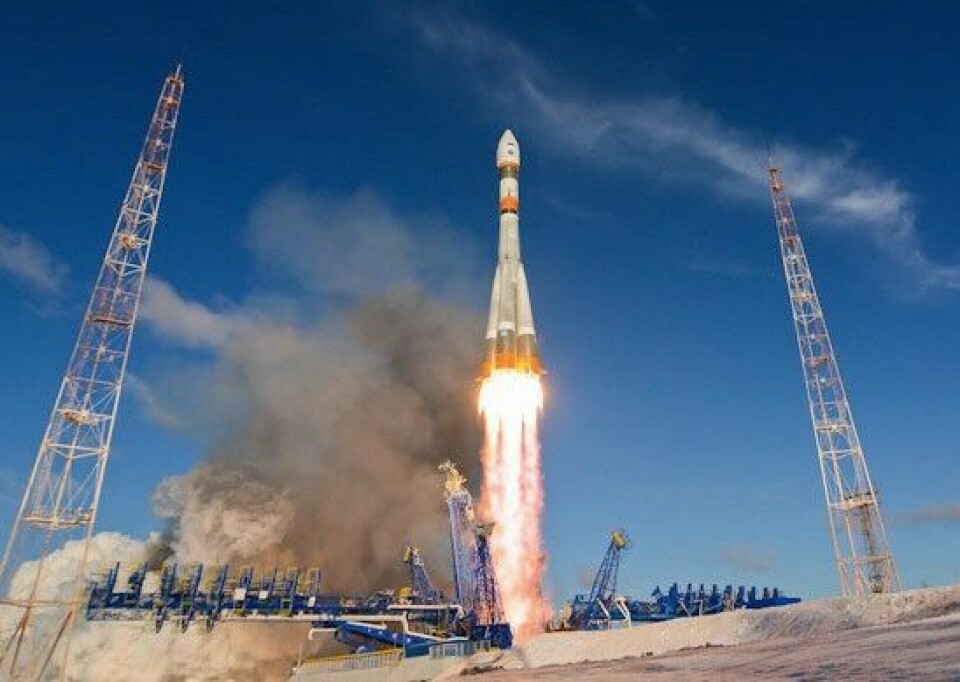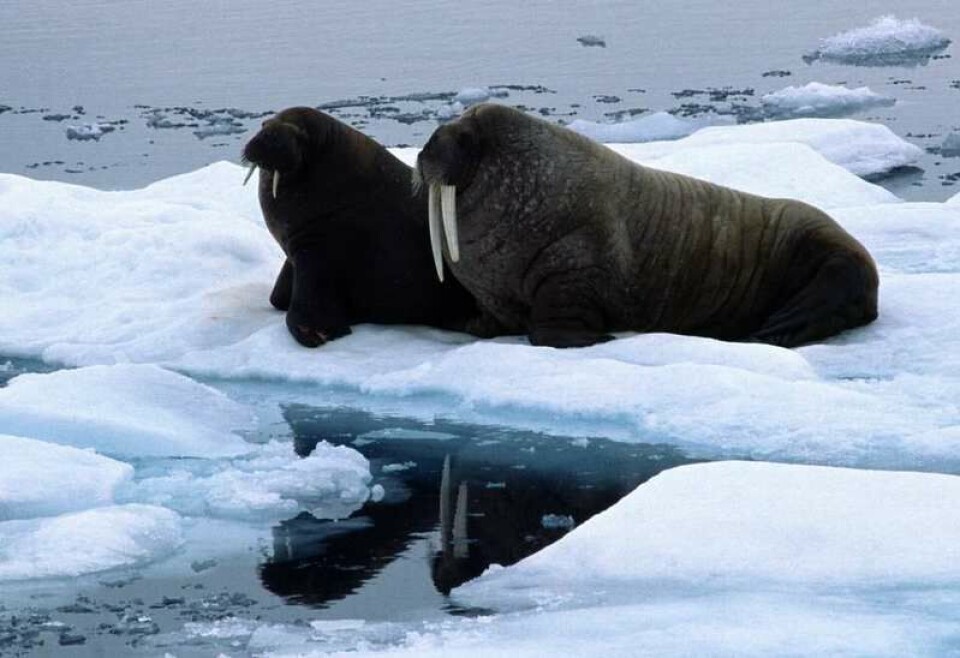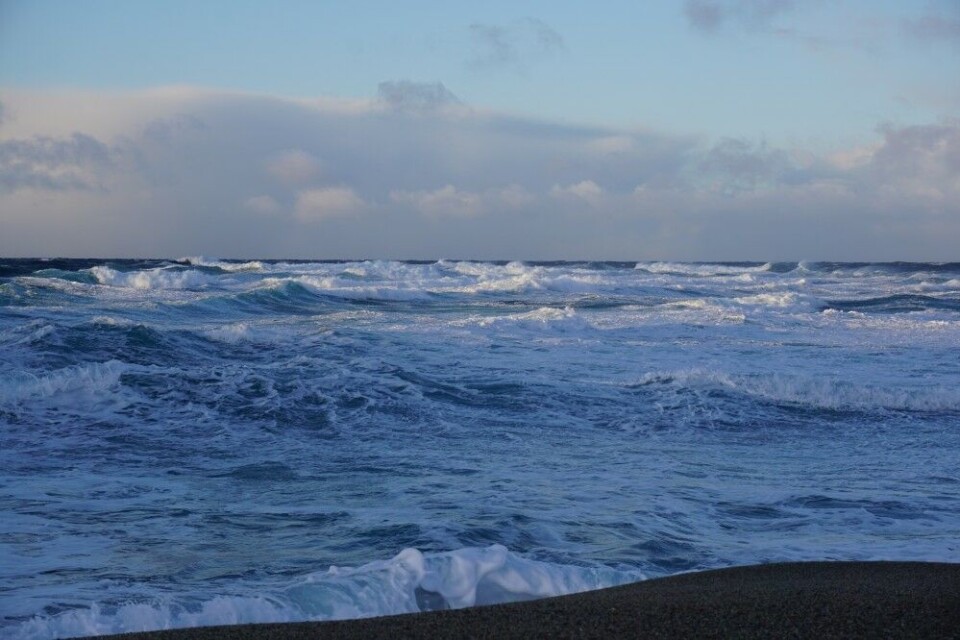
Fears toxic splash in Barents Sea and Baffin Bay from Russian rocket
Inuit in Canada and Greenland are calling on Ottawa and Copenhagen to demand the postponement of a Russian rocket launch scheduled to deliver a European Space Agency satellite to orbit next week and look for alternative launch vehicles that use non-toxic propellants for any future launches.
Text by Levon Sevunts
The launch of the three-stage rocket, fuelled with hydrazine, a highly toxic propellant, is scheduled to take place on Friday, Oct. 13, from the Plesetsk Cosmodrome in northern Russia, about 800 kilometres north of Moscow.
The Russian Rockot launcher, an old Soviet SS-19 intercontinental ballistic missile (ICBM) converted for civilian use, carrying the ESA’s Sentinel-5p satellite produced by the Netherlands, is expected to shed one of its stages over the Barents Sea, north of Norway, and the second stage over the North Water Polynya in Baffin Bay, a crucial Arctic habitat located in the waters between Canada’s Ellesmere Island and Greenland.
Between them, the two stages could contain as much as eight tonnes – up to seven tonnes in the first stage and up to one tonne in the second stage – of the residual toxic fuel as they fall to Earth, according to a recently published research paper into the controversial Russian launches.
Vital Arctic habitat
The North Water Polynya, or Pikialasorsuaq as it is known in Inuktitut, is an area of year-around open water surrounded by sea ice. It is one of the most biologically productive areas in the circumpolar Arctic and is a breeding ground and migration area for animals such as narwhal, beluga, walrus, bowhead whales and migratory birds.

In January 2016, the Inuit in Canada and Greenland set up the Pikialasorsuaq Commission to work on an Inuit strategy for safeguarding and monitoring the health of the North Water Polynya for future generations.
“The Pikialasorsuaq Commissioners spent the past 16 months listening to the people who live and use this magnificent Arctic marine region and heard clearly that Inuit do not want any action that would affect the sustained productivity of the Pikialasorsuaq,” Nancy Karetak-Lindell, International Commissioner and Acting Chair of the Inuit Circumpolar Council, said in a statement sent to Radio Canada International.
“These Inuit communities rely on the marine wildlife for a significant part of their nutrition and the thought of hazardous rocket fuel and debris from space being deliberately deposited in the Pikialasorsuaq is unacceptable,” added Kuupik Kleist, the Greenland Commissioner and the former premier of Greenland.
‘What if we get killed?’
“What is being planned by Russia and European Space Agency to launch a satellite where it will drop a fuel rocket into the North Water between Greenland and Ellesmere Island Canada is very disturbing and scary,” said Larry Audlaluk, an Inuit hunter from Grise Fiord. “Not only do we (Inuit) on both sides of the largest open water depend on the wildlife for sustenance, but the distance between the two countries is very small. The closest gap further north between the two islands is only 32 kilometers.”
Audlaluk said the Inuit who live near the proposed debris field worry about miscalculation.
“What if we get killed?” Audlaluk said.
Canada’s federal government has an obligation to protect its citizens and the environment from the risk of contamination by such a toxic chemical, said Eva Aariak, the Canadian Commissioner for the Pikialasorsuaq Commission.
Very low risks
Brendan Sutton, a spokesperson for Global Affairs Canada, said Ottawa has raised the issue of the need for early notification of space launches to ensure that all precautions relating both to the safety and security of airspace and any potential environmental concerns can be addressed. This includes Russia, he said.
“Since most space debris disintegrates and burns up entirely on entry into the Earth’s atmosphere, risks are considered very low that debris or unspent fuel will reach the marine environment,” Sutton said. “However, Canada expects every effort will be made to ensure that debris does not land on Canadian soil or in Canadian territorial waters.”
While acknowledging the highly toxic nature of the rocket propellant used by Rockots, officials at the ESA also denied that the jettisoned rocket stage presents any danger to the health of the Inuit or the fragile Arctic environment.
Speaking to Radio Canada International on background, they argued that none of the remaining fuel survives the stage’s fiery re-entry into the Earth’s atmosphere and is completely burned up by the time the molten metal debris plunge into the Arctic waters.

Peer-reviewed study
The potential dangers presented by space debris from the Russian rocket splashing in the Baffin Bay were presented by Michael Byers, Canada Research Chair in Global Politics and International Law at the University of British Columbia, in a scientific paper published on Monday in the prestigious science journal, Polar Record.
The article has gone through an extensive peer review, including by oceanographers, organic chemists and rocket scientists, Byers said in a phone interview with Radio Canada International.
‘Devil’s breath’
Since 2002, Russia has dropped rocket stages fuelled with dimethylhydrazine (UDMH), also referred to as hydrazine, into the Barents Sea and the North Water Polynya on ten occasions, he said.
UDMH is a highly toxic chemical that has caused widespread health and environmental damage in Kazakhstan, in a vast area around the Baikonur Cosmodrome, and in the vicinity of the Plesetsk Cosmodrome in Russia as a result of its extensive use there as a rocket fuel for both Soviet and Russian space programs, Byers said.
Not all of the fuel on-board is consumed during a launch and the residual fuel tends to escape the incoming stages, Byers warns.
“The stage does in fact break up during re-entry but the fuel does not burn up and disappear, it turns into an aerosol and then it drifts gradually down onto the Earth over a wide area with very serious health consequences and environmental consequences in Kazakhstan and Russia and quite possibly therefore in Canada and Greenland,” Byers said.
And then, as it is exposed to the air and to sunlight, the UDMH is transformed into other chemicals many of which are actually even more toxic than the original chemical and last in some cases for much longer, Byers said.
“It’s a devastating chemical, in Russia it is referred to as ‘devil’s breath,’” Byers said. “It is very volatile, very useful for launching rockets but also it has this very dark and dangerous side in the toxicity.”
Conducting health and environmental monitoring
Byers recommends conducting health surveys of Norwegian fishermen frequenting the Barents Sea and of Inuit living near the North Water Polynya to determine whether elevated rates of UDMH-related diseases are present in these populations.
He also calls on authorities to sample the air and water in the Barents Sea and the North Water Polynya immediately after any future launch to determine if UDMH or any of its transformation products are present.
Scientific studies, including experiments, should be conducted into the behaviour of UDMH in the conditions prevalent in the Barents Sea and the North Water Polynya, including relatively low air and water temperatures, salinity and pH, Byers recommends in his research paper.
‘Prohibited under international law’
Byers, who is one of Canada’s preeminent international law experts, argues that in addition to the environmental concerns, the practice of dumping rocket stages and their potentially toxic contents in Canada’s Exclusive Economic Zone is clearly prohibited under international law.
“You are prohibited under the United Nations Convention on the Law of the Sea to cause pollution to the ocean with objects that pass through the atmosphere,” Byers said. “There is a specific provision in the Law of the Sea Convention that prohibits pollution through the atmosphere.”
There is also extensive pollution prevention jurisdiction, which Canada exercises under the Arctic Waters Pollution Prevention Act that prohibits any pollution to Canada’s Arctic waters, including out to the full extent of the country’s Exclusive Economic Zone, Byers said.
All parts of the North Water Polynya lie within 200 nautical miles of either Canada or Greenland, which means that it falls within the exclusive economic zones of those two countries. There are no ‘high seas’ in northern Baffin Bay, which has been bisected by an agreed maritime boundary since 1973, Byers wrote in his paper.
There is also the Convention on International Liability for Damage Caused by Space Objects that makes both Russia and the European Space Agency, and the Netherlands “absolutely and jointly liable” for any damage that they cause, Byers said.
“I don’t need to prove that damage is caused,” Byers said. “Under international law there is something called the precautionary principle, the burden of proof is on them and not on me. They need to prove that there is no risk of damage and unless they can prove there is no risk of damage, they are not allowed to do this launch.”
ESA officials said their legal team disagrees with Byers’s legal assessment but would not elaborate.
“Canada expects treaty members, including Russia, to fully comply with their obligations and will continue to express its clear position in this regard,” Sutton, the spokesperson for Global Affairs Canada, said.
Getting off hydrazine
Hydrazine fuel was widely used around the world during the Cold War and up to the end of the 20th century, but international space agencies, including the Russian space agency, are increasingly moving to launchers that use alternative non-toxic fuels such as kerosene and liquefied oxygen, Byers said.
“The message that the governments involved in this case need to hear is: ‘Look you have technological alternatives, there is no excuse to using this old technology, this old dangerous fuel in 2017,” Byers said.
“Switch the type of rocket, pay a little bit of extra money to do this in a safe way, in a way that does not create a risk for the Arctic environment and most importantly for the Inuit who live there.”
Byers cited the example of South Korea, which is launching a new satellite on the exactly same trajectory, but has decided to pay a bit extra for a newer launch vehicle also produced by Russia but one that uses non-toxic propellant.
“There are lots of non-toxic alternatives so the focus of my effort right now is to shame the European Space Agency, to shame the government of the Netherlands to pay a little bit more money to launch this satellite in environmentally risk-free way,” Byers said.
Officials with the European Space Agency said they are switching to newer Vega rockets that will replace the Rockots after the last two remaining launches, including the one on October 13.
However, the Sentinel-5p satellite was designed and built to fit on a Rocket launcher and cannot be launched on another rocket, ESA officials said.
Discovery by teenage rocket scientist
The controversy over the Russian practice of jettisoning rocket stages over the Baffin Bay erupted for the first time in 2016 thanks to a discovery made by his teenage son, Cameron, who is listed as a co-author in the paper, Byers said.
“Cameron actually discovered that Russia was using Baffin Bay as a disposal site for rocket stages,” Byers said. “And it was he who also identified that the rockets they were using were fuelled with a highly toxic chemical, and so he is the co-author of this peer-reviewed article in large part because the article would not exist without him.”
His 17-year-old son has a very strong interest in rocket science and spent a lot of time on Internet chat boards that are frequented by real rocket scientists, Byers said.
It was during one of those chats with American, Russian and Chinese rocket scientists that someone mentioned that a Russian satellite launch was going to take place and they included a “Notice to airmen” (NOTAM), an official notice issued by air traffic control to warn pilots of risks from falling space debris, Byers said.
“Cameron immediately brought that notice to airmen to me because the area that was indicated is right in the middle of northern Baffin Bay, which is shared between Canada and Denmark,” Byers said.
Cameron’s discovery was made in early February 2016, shortly before the launch that took place on February 16, 2016.
The Russian government had notified Canadian authorities and had assured them that all the fuel would be burned up during the re-entry and there was no risk to anyone on the ground, on the water or the sea ice, Byers said.
“I didn’t take that assurance myself at face value and I started doing some research and in April of that year I published an article in the National Post, alerting people to the next launch, which was upcoming in June of 2016,” Byers said, referring to one of Canada’s leading national newspapers.
Puzzling video
The story generated a lot of interest and media attention but Byers said he continued digging into the issue.
“As part of my research I then discovered that there was a very disturbing set of scientific articles concerning the damage caused by this rocket fuel in Kazakhstan and Russia as a result of rocket stages falling on land in those countries, causing cancer rates that were twice the average in unpolluted areas, causing widespread deaths of fish in lakes in northern Russia,” Byers said. “And that’s when I started to connect the dots that this wasn’t just a hypothetical risk but there was a very real risk.”
Byers said from the outset he was sceptical of Russia’s assurances because of Moscow’s “terrible environmental record” in the Arctic not just from space launches, but also oil and gas activities and the legacy of nuclear reactors used in Cold War-era submarines and naval ships.
But in addition to that his son Cameron discovered a video posted on YouTube that had been taken by a U.S. soldier at the Thule air base in northern Greenland, Byers said.
“It actually shows the re-entering rocket stage and most importantly it shows that the re-entry breaks into two separate bright lights, one of which proceeds quickly towards Baffin Bay and the other which remains stationary,” Byers said.
“And when I dug in to the Russian scientific literature, I realized that that stationary light was quite possibly a vaporised cloud of this toxic chemical, this hydrazine.”
Canada used Rockots too
According to Eurockot, the German-based joint venture of ArianeGroup and Khrunichev Space Center, “SS-19 ICBM has flown over 150 times, with only 3 failures which occurred early on in its operational history.” Russia may have up to 100 more of these rockets in stock, Byers said.
In June 2003, the Canadian Space Agency used the same Rockot rocket to launch its MOST (Microvariability and Oscillations of Stars) satellite into space.
This story is posted on Independent Barents Observer as part of Eye on the Arctic, a collaborative partnership between public and private circumpolar media organizations.















